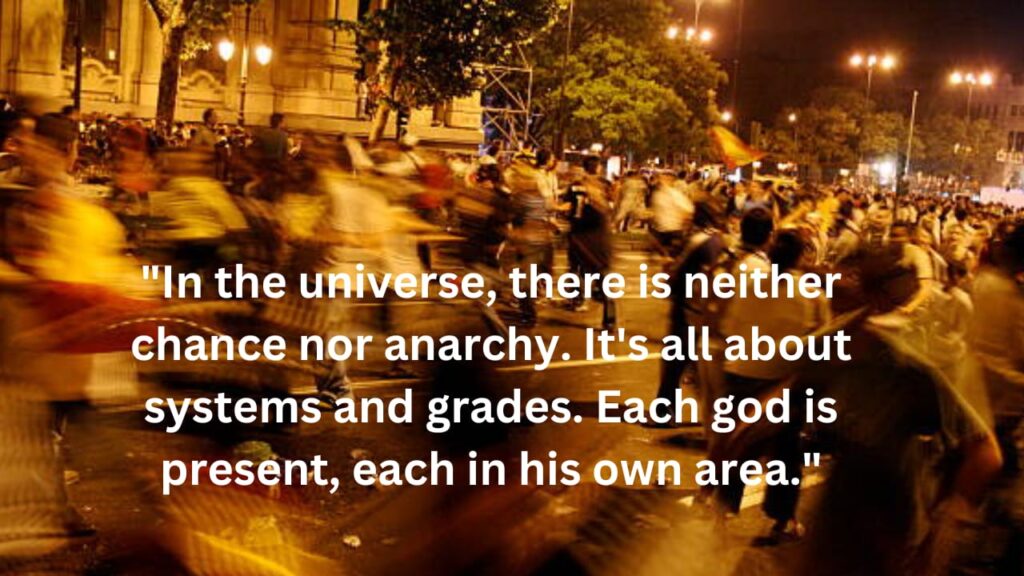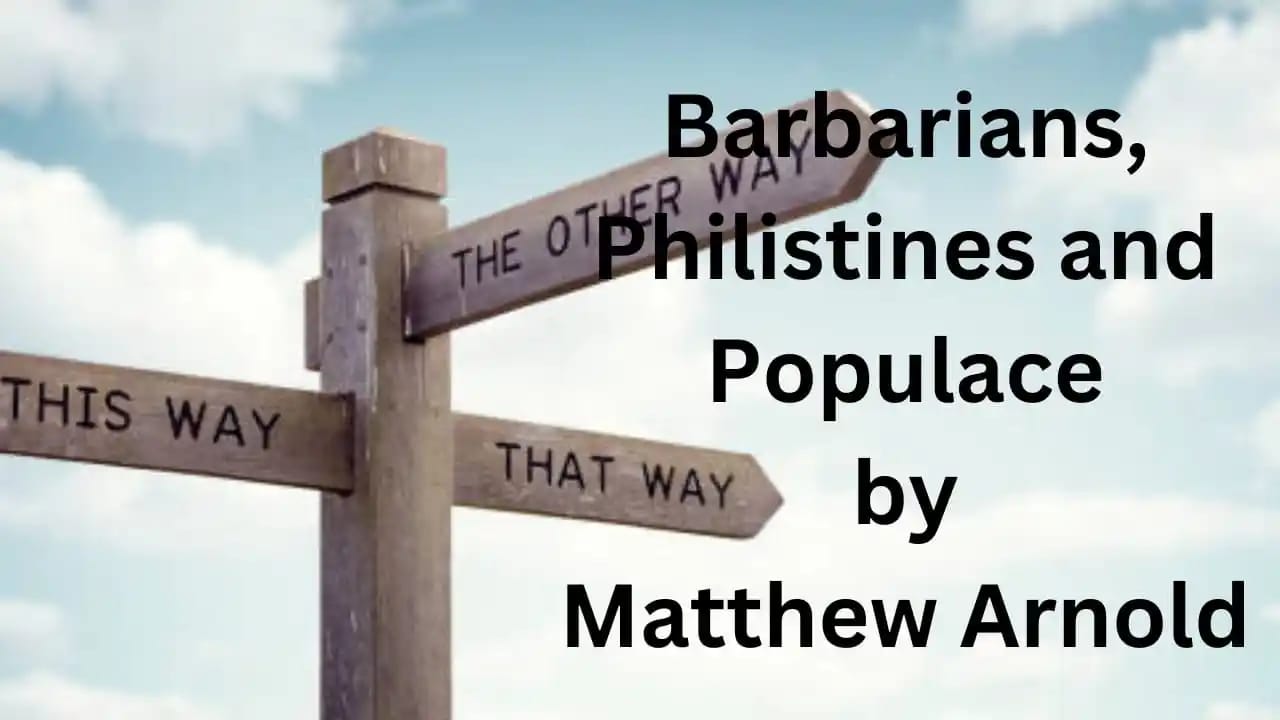Exploration of Barbarians, Philistines, and Populace in Victorian Society
Matthew Arnold, a poet and cultural critic, painted a vivid picture of society through his lens of “barbarians,” “philistines,” and the “populace.” In his work “Culture and Anarchy,” Arnold dissected these archetypes, revealing attitudes towards culture and intellect. Barbarians, indifferent to refinement, prioritize materialism. Philistines, trapped by convention and commerce, neglect higher pursuits. Yet, Arnold finds hope in the populace, believing education can uplift. Join us as we navigate Arnold’s insights, probing societal dynamics and pondering paths to enlightenment.
Why did Arnold discuss these three classes in “Culture and Anarchy?”
Matthew Arnold discussed the concepts of barbarians, philistines, and the populace in “Culture and Anarchy” to analyze and critique the societal attitudes towards culture and intellectual pursuits prevalent in Victorian England. Arnold was deeply concerned about the state of society amidst rapid industrialization, urbanization, and social change. He believed that the prevailing cultural disarray and moral confusion could be addressed by understanding the forces shaping societal values and behaviors.
Barbarians:
Historically, the term “barbarians” referred to people perceived as uncivilized. In the context of Matthew Arnold’s work “Culture and Anarchy,” barbarians represent individuals who exhibit indifference or hostility towards intellectual and cultural refinement. They prioritize materialistic pursuits and lack appreciation for the arts, literature, and higher learning. Thus, in Arnold’s usage, barbarians symbolize a societal archetype characterized by a lack of sophistication and an emphasis on materialism over intellectual pursuits.
Characteristics of barbarians:
In the context of Matthew Arnold’s discourse on societal archetypes, here are five characteristics commonly associated with “barbarians”.
- Indifference to Intellectual Pursuits: Barbarians exhibit a lack of interest or hostility towards intellectual and cultural refinement. They prioritize materialistic pursuits and immediate gratification over the pursuit of knowledge, arts, and literature.
- Materialistic Outlook: Barbarians are often consumed by materialism, valuing wealth, possessions, and superficial pleasures above deeper values and pursuits. Their focus on material accumulation may lead to a neglect of spiritual or intellectual enrichment.
- Shallowness and Superficiality: Barbarians tend to lead shallow and superficial lives, devoid of deeper meaning or reflection. They may engage in hedonistic behaviors and seek immediate gratification without considering the long-term consequences.
- Disconnection from Cultural Values: Barbarians are often disconnected from the cultural heritage and values of society. They may disregard traditions, artistic expressions, and intellectual achievements, viewing them as irrelevant or unimportant.
- Fragmentation of Society: The prevalence of barbarian attitudes can lead to societal fragmentation, with individuals prioritizing individualistic pursuits over communal well-being. This fragmentation undermines the cohesion and progress of society as a whole, as deeper cultural and intellectual values are neglected in favor of materialistic concerns.
Philistines:
In Matthew Arnold’s exploration of societal archetypes in “Culture and Anarchy,” the term “philistines” emerges as a defining archetype representing a specific segment of society. Arnold’s characterization of philistines sheds light on a group ensnared by convention, commerce, and a narrow-minded pursuit of material gain. Understanding the characteristics of the Philistines offers insights into societal attitudes towards culture, intellect, and the pursuit of higher ideals.

Characteristics of Philistines:
Here are some characteristics of philistines listed below.
- Conformity and Conventionality: Philistines adhere rigidly to societal norms and conventions, often at the expense of individuality and creative expression. They prioritize fitting into established social structures over exploring innovative ideas or challenging prevailing beliefs.
- Commercialism and Materialism: Philistines are deeply entrenched in a culture of commerce and materialism, placing value on financial success, status symbols, and conspicuous consumption. Their worldview is shaped by a relentless pursuit of wealth and possessions, overshadowing considerations of intellectual or spiritual fulfillment.
- Narrow-mindedness and Ignorance: Philistines exhibit a lack of intellectual curiosity and openness to new ideas. They are content with their existing knowledge and beliefs, resistant to intellectual challenges or alternative perspectives that may disrupt their worldview.
- Superficiality and Shallow Pursuits: Philistines engage in superficial pursuits, prioritizing entertainment, leisure, and immediate gratification over deeper intellectual or cultural experiences. Their lives are characterized by a shallowness that fails to engage with the complexities and richness of human existence.
- Resistance to Cultural Enrichment: Philistines display a resistance to cultural enrichment, dismissing art, literature, and intellectual endeavors as irrelevant or unimportant. They fail to appreciate the value of cultural heritage and the transformative power of artistic expression in enriching human experience.
Populace
In “Culture and Anarchy,” the concept of the populace emerges as a central archetype representing the broader working-class population. Unlike the barbarians and philistines, the populace embodies a diverse array of individuals from various socioeconomic backgrounds. Understanding the characteristics of the populace offers insights into their role in shaping societal attitudes towards culture, intellect, and social progress.
Characteristics of Populace:
Here are some characteristics of the populace listed below.
- Resilience Amid Adversity: The populace demonstrates resilience in the face of economic hardship, social inequality, and systemic challenges. Despite facing various obstacles, they exhibit perseverance and determination in their daily lives.
- Cultural Diversity: The populace encompasses a diverse range of cultural backgrounds, traditions, and experiences. This diversity enriches the social fabric and contributes to the vibrant tapestry of society.
- Community Cohesion: The populace values community bonds and solidarity, often coming together to support one another in times of need. Strong social networks provide a sense of belonging and mutual support within the populace.
- Aspiration for Betterment: Despite facing socioeconomic challenges, many individuals within the populace harbor aspirations for personal and collective betterment. They strive for upward mobility, education, and opportunities for advancement.
- Potential for Cultural Enrichment: Arnold recognizes the potential for the populace to embrace culture and education if provided with the opportunity and encouragement to do so. Given access to resources and support, individuals within the populace can cultivate intellectual curiosity and appreciation for the arts, contributing to cultural enrichment and social progress.
How do these classes cause anarchy?
Matthew Arnold’s discussion of the classes of barbarians, philistines, and the populace in “Culture and Anarchy” revolves around the idea that their respective attitudes towards culture and intellectual pursuits contribute to societal discord and moral confusion, leading to a state of anarchy in Victorian England.
Collectively, the attitudes and behaviors of these classes create a fragmented and disordered social landscape characterized by moral confusion, materialistic pursuits, and intellectual stagnation. This state of anarchy arises from a lack of cohesive cultural values and a failure to cultivate intellectual and moral excellence within society.
Conclusion
In conclusion, Matthew Arnold’s examination of the classes of barbarians, philistines, and the populace in “Culture and Anarchy” offers a profound critique of Victorian society and its attitudes towards culture and intellectual pursuits. By embracing culture as a unifying force and promoting intellectual and moral development, society can move towards a more enlightened and harmonious social order, transcending the discord and chaos of anarchy.
